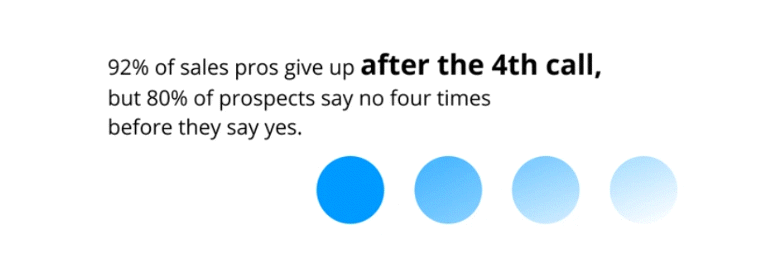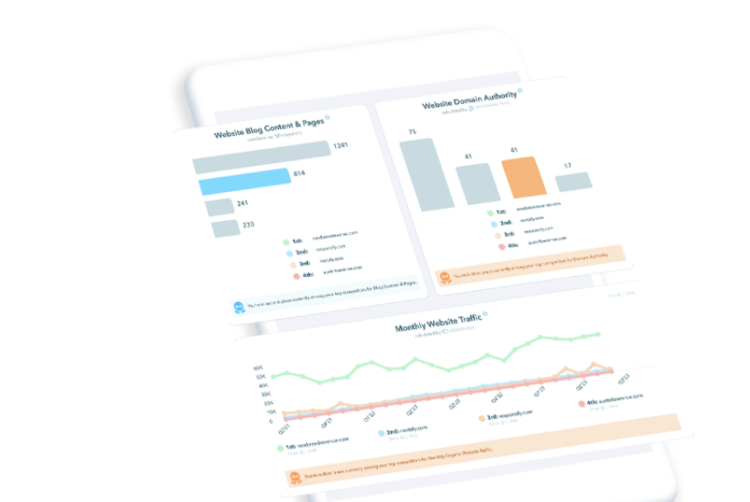 3,003 views
3,003 views December 20, 2023
December 20, 2023 5004 Views
5004 Views  7 min read
7 min readIf you’re a B2B looking to gain better insights into your target audience, gathering intent data will help you understand your customers’ buying journey and user behavior to create better content campaigns that provide a better experience for them. Staying ahead of your competitors and high-value lead generation needs more than outdated traditional strategies. If you’re here, you want to use data to grow your lead and sales pipeline effectively. And you’re not alone:
Intent data refers to information that provides insight into a prospect’s or customer’s intention to take a specific action. In lead generation and B2B sales, intent data is valuable because it helps businesses understand potential customers’ interests, needs, and behavior. Intent data provides insights into buyer engagement and purchase intent. It’s data that allows you to tailor your messaging and build relationships with leads immediately. You can gauge a buyer’s intent level through the content they consume and how likely they are to become customers. This information can be leveraged to tailor marketing and sales efforts more effectively. Let’s first look at the different types of intent data—first-party and third-party data. You can leverage each to serve your target audiences best.
 First-party data is any data collected from your site. This could include forms filled in for gated content. First-party data is the data you collect from your digital assets—your website, email campaigns, social media, interactions, or actions taken you can see on your CRM. Your visitors give their information in exchange for an offer. It’s limited to those who displayed an interest in your business or solution.
First-party data is any data collected from your site. This could include forms filled in for gated content. First-party data is the data you collect from your digital assets—your website, email campaigns, social media, interactions, or actions taken you can see on your CRM. Your visitors give their information in exchange for an offer. It’s limited to those who displayed an interest in your business or solution.
Third-party data is any data collected from another website. This also includes filled-in forms. Third-party data is broader than first-party data as it is not as restricted. Your ideal customers may not have heard of you and your solutions yet. But it can provide a broader view of a prospect or account’s online activity. ZoomInfo Intent “surfaces accounts that research topics relevant to your business through the online consumption of product reviews, infographics and blogs, product comparisons, message boards, case studies, and general news.” Another source, Lead Forensics, is a tool focused on B2B lead generation. It helps identify visitors, alerts for potential sales opportunities, and provides detailed company information.
Sales and marketing teams use intent data to identify interest, build segmented and targeted lists, personalize the customer experience, and help with lead scoring. We’re going to look at how the data can be beneficial for lead generation and B2B sales through the eyes of your own website.
The insights available through buyer data strategies can drive your marketing results. Intent data helps kick off your sales process. Modern-day examples of where you can find data include email and content engagement, social media, and online chat interactions. You can gauge buying intent by looking at the content your buyers consume. For example, what posts are your visitors reading on your website? Are they returning to your site for more information? Are they downloading eBooks or other offers? Using intent data to accelerate your sales cycle will improve conversion rates and fine-tune marketing efforts. We explore ways to use data throughout the sales funnel:
You can use customer relationship management (CRM) software to track and score high-intent leads from your website and marketing campaigns. For instance, we create premium offers designed to provide significant value and attract your target audience in exchange for contact information. When prospects download the offer, it signals their interest in the topic. It doesn’t stop there, however. Although premium offers include in-depth and comprehensive information, your readers must be nurtured. Around half of the leads aren’t ready to buy when they first inquire. However,
Marketing can warm leads with personalized experiences. This means sending the same email to everyone on your list is not how to grow your business. Segmenting and personalization are ways to get the most out of your email marketing. Think back to when you received an email without knowing about the product, service, or content. It probably brought feelings of discontent. There was no cohesive communication; if the sales team tried to follow up with you, it would waste their time chasing a lead that wouldn’t convert.
Personalizing your email outreach can be divided into active and inactive users or customers and non-customers. This small change makes a difference in their feeling, experience, and interaction. Content should enable the sales team, not inhibit it. According to the Content Marketing Institute, in 2022, B2B content marketing teams reported successfully using content to:
Intent data will help identify specific topics or keywords your target accounts or buyer personas are actively researching. Segment your audience based on their search intent and provide each segment with specialized content about your product or service. Helping your prospects navigate the complexities of the buying process is a win. Buyer intent keywords are either high (specific, to the point, and more likely branded keywords) or low intent (indirectly related and more general). There are four different types of buyer intent keyword queries:
Targeting keywords that align with the needs of your target audience will create a more effective content strategy. As a growth agency, we help B2B companies the most with creating campaigns around informational queries and the content type—a blog post. It helps increase their visibility and trust factor and targets new leads you can convert in the buyers’ journey.
Intent data is a type of intelligence that shows which leads are actively researching a topic related to your business. That’s why the ‘informational’ buyer intent keywords are significant in your business growth. The queries answer your customers’ questions ‘just in time.’ You can craft better sales materials by matching messages to their customer journey.
B2B buyers want straightforward, no BS messaging that tells them how your product or service will help them. They want you to understand their circumstances and be direct.” (LeadMD)
Data presented at the right time to the right people and with straightforward communication is invaluable. It will help shorten the sales cycle if you talk about how your product or service will help your customer reach a desired future state.
It comes down to this. Pinpoint your prospects that show buying signals. But you have to understand them, the marketing metrics that are happening, and the fundamental importance of quick and concise follow-up.
Personas should be created for intent-based content campaigns. With half of B2B buyers still searching for your solution, take the time to refine your personas. Answer these questions:
As businesses become more analytical about using data, scoring the lead intent and creating marketing campaigns corresponding to that score is priceless. Knowing leads better will help the marketing and sales organization become more effective and analytical. Understanding conversion rates for leads, the sales cycle length, ROI for lead generation, and your content progress in key marketing channels (blog or social media) is essential.
 source: zety
source: zety
Want to build a future-proof follow-up strategy for your sales team? Do you want to generate more leads with intent data?
B2B companies need to prioritize their prospects with customized and specific messaging. B2B data is a powerful tool that can help you understand and influence your customers and prospects in the digital landscape. Intent data can help B2B businesses understand their customer’s journey, identify prospects, and increase lead generation.
Responsify can strategically impact lead generation and B2B sales success through content campaigns and email lead nurturing programs. We help businesses focus on the right prospects, engage with them at the right time, and ultimately drive more meaningful and successful customer relationships. We help companies grow their businesses by engaging and educating your ideal audience.
Get a fresh perspective on your marketing with a free assessment. In the interim, go ahead and discover your company’s growth potential with our Marketing Insights Evaluator™ and get some strategic recommendations instantly.
